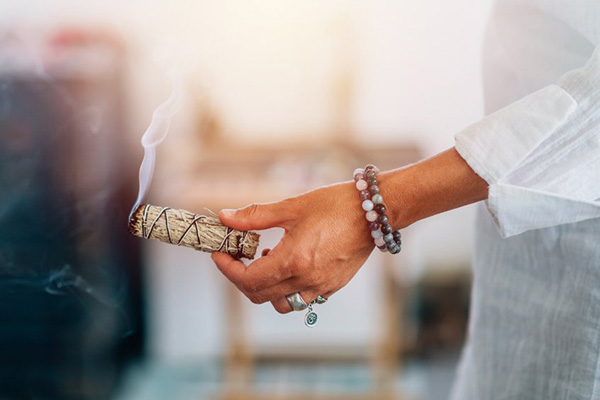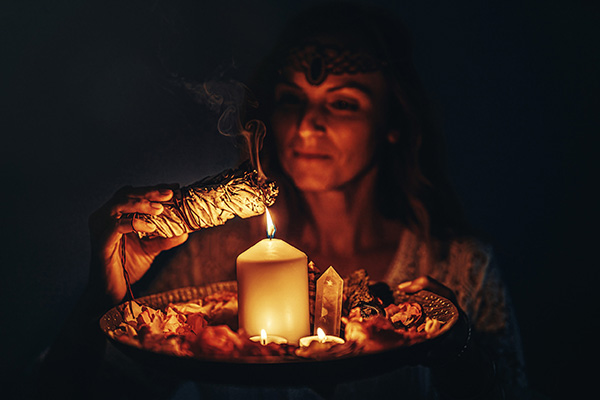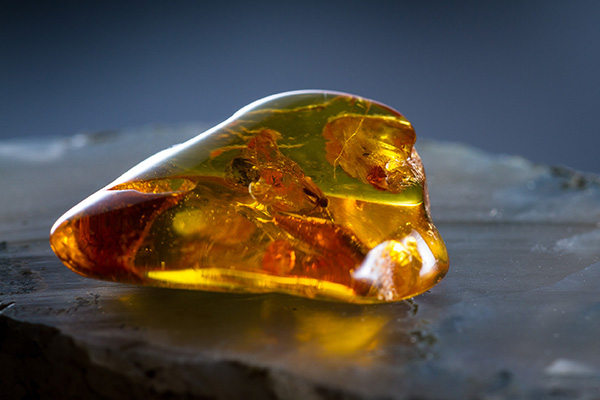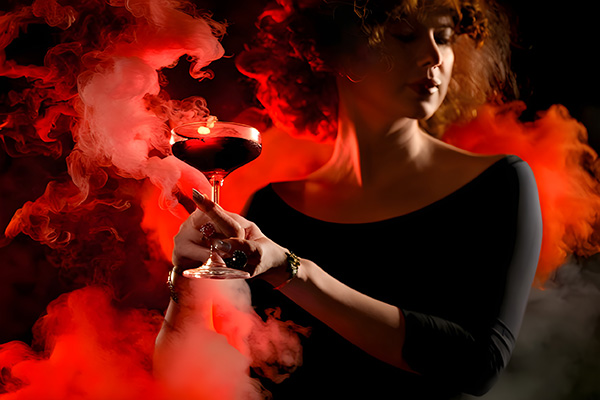incense
Simple Energy Cleansing And Clearing Techniques
 Everything in the universe is energy – so are you. In addition to our physical body, we also have a subtle energy body consisting of various layers, including the aura or energy field, the chakras or energy centers, and various smaller energy channels and points.
Everything in the universe is energy – so are you. In addition to our physical body, we also have a subtle energy body consisting of various layers, including the aura or energy field, the chakras or energy centers, and various smaller energy channels and points.
To be holistically healthy and happy it is therefore important to not only take care of the physical body (which is undoubtedly also very important and unfortunately too often neglected), but also the energy body. Our energy body can become unbalanced and even dis-eased with toxic patterns, old blockages, repressed negative emotions and deep energy imprints of trauma. It is vital for our spiritual, mental, emotional, and physical well-being to regularly cleanse and maintain our energy body.
In addition, as spiritual beings in humans form we are all energetically connected to each other and therefore we are affected daily by the energies of others. And the truth is that many people in our everyday environment have unhealthy and even toxic energy bodies that are not exactly emanating good, positive vibrations.
For example, you are in a happy, energized mood when you visit relatives or friends, and although everyone in the room outwardly appears to be doing perfectly fine, you soon begin to feel energetically drained or experience unusual emotions, such as suddenly feeling depressed, anxious or angry. This may well be due to someone else’s energy frequency present in the room. Energy never lies, even when we pretend or try to hide it.
The more empathic and highly sensitive we are, the more likely it is that we will intensely feel these environmental energies. A regular energy cleansing is vital to neutralize and shield us from external toxic vibes. I am such a person myself, and I have learned the hard way how destructive it can be when I neglect my energetic self-care and spiritual cleansing.
The Ancient Spiritual Tradition Of Smudging
 Just as our physical environment can become cluttered and unclean, our aura or energy field also accumulates stagnant and negative energy.
Just as our physical environment can become cluttered and unclean, our aura or energy field also accumulates stagnant and negative energy.
Regularly cleaning our homes and workplaces promotes health, hygiene and optimal function — and the same principle applies to our personal and spiritual energy. Clearing our energy field and environment helps to release negativity and toxic emotions, stress and anxiety, and promotes a sense of calm, clarity and balance.
Energy cleansing is essential for removing blockages that may be hindering personal and spiritual growth or disrupting your connection to spirit and the divine. Over time, lingering negative or toxic energy can even manifest as mental health issues, spiritual disconnection and even physical ailments.
By maintaining a regular practice of energy cleansing, you create a positive, harmonious flow of energy that supports overall health and well-being. In addition, a clear energy field sharpens your intuition and inner guidance, making it easier to align with your higher self and make decisions that are aligned with your greatest good.
Smudging is also a powerful way to clear negative energy attachments and banish malevolent spirit entities.
One of the most time-tested and effective methods of clearing unwanted energy is smudging, or smoke cleansing — an ancient purification ritual steeped in history and practiced by various cultures, religions, and spiritual traditions around the world.
Healing Your Chakras With Flower Power
 Plants have long been regarded as nature’s healers, offering remedies for a wide range of physical ailments. But beyond their traditional medicinal uses, plants — especially flowers — have incredible energetic properties that can profoundly affect our well-being.
Plants have long been regarded as nature’s healers, offering remedies for a wide range of physical ailments. But beyond their traditional medicinal uses, plants — especially flowers — have incredible energetic properties that can profoundly affect our well-being.
As a firm believer in the healing power of plants. I have seen firsthand how Mother Nature can work in harmony with our body, mind and spirit.
Flowers in particular, with their delicate beauty, aromatic essential oils and subtle vibrational frequencies, have powerful healing properties.
It is no coincidence that flowers are used in many cultural traditions to convey empathy and caring, to provide comfort, and to promote well-being. This is not simply because flowers are pretty and colorful, but because they have such powerful healing properties.
In many cultures, flowers are used to express sympathy and support. For example, it is common to send a bouquet of “get well soon” flowers to someone who is ill or recovering from surgery. Flowers such as lilies and daisies are often chosen for their associations with purity and cheerfulness, helping to lift the recipient’s spirits and contribute to emotional healing.
In Japan the practice of giving flowers, known as hanakotoba (flower language), is deeply embedded in cultural rituals. Each flower has a specific meaning, and their use conveys messages of sympathy, respect or congratulations. Chrysanthemums are associated with long life and are often given to the sick or elderly to wish them good health and longevity. The thoughtful selection of flowers is believed to bring emotional healing and comfort. Continue reading
How To Deal With Spirit Presence In Your Home
 Spirit energies are around us all the time in all shapes and forms. Many people have experienced, or at least know someone who has, a spirit presence or paranormal activity in their home.
Spirit energies are around us all the time in all shapes and forms. Many people have experienced, or at least know someone who has, a spirit presence or paranormal activity in their home.
These encounters can range from subtle to intense, and the nature of the experience often varies greatly depending on the person’s beliefs, fears, and openness to the supernatural.
For some, the presence of a spirit is a source of terror, while for others it is a comfort, like being in the presence of an old friend. Then there are those who scoff and laugh at the very idea that a ghost could exist.
These varied responses highlight an important question: why do people have such different experiences with spirits?
In my experience, it depends on two main factors: a person’s beliefs and attitudes about spirituality and the supernatural, and the nature of the spirit presence itself, whether it is benevolent or malevolent.
My grandmother came to me within three days of her death to tell me she was okay. She gave me a sense of peace and I didn’t see her again. Years later, my mother also came to me to tell me that she was okay and that all was well where she was. It was also a one-time visit.
But with my stepson, who committed suicide, and my father, it was different. He started showing up at his former house (he had left a wife and two beautiful boys) on a regular basis. He would turn on the lights or the faucet. In the middle of the night she would hear our grandchildren talking and giggling in one of their rooms. They were only two and three years old when he died. She went to investigate, thinking they were up to no good, but only one of them was in the room. When she asked who he was talking to, her boy said, “Daddy was here.”
The Mystical Properties Of Ancient Amber
 Crystals, gemstones, and incense have been widely used in spiritual, esoteric, and healing practices throughout the ages and continue to be popular today.
Crystals, gemstones, and incense have been widely used in spiritual, esoteric, and healing practices throughout the ages and continue to be popular today.
But there is another type of natural material that does not enjoy the same level of widespread recognition and popularity, despite its unique metaphysical properties and significance in various cultures and mystical traditions.
Resins are less well known and used by modern practitioners. I find that many people are unfamiliar with the various types of resins available and their metaphysical properties.
Compared to crystals, gemstones, and incense, which have gained widespread popularity in recent years, especially through social media and the Internet, resins have received less attention and exposure.
As a result, people may be less likely to encounter resins in their exploration of metaphysical tools and practices.
I also find that people who are at least somewhat familiar with resins tend to associate them with their use as incense. Resins such as frankincense, myrrh, copal, and others are often burned as incense to purify spaces, objects, and individuals. The smoke cleanses negative energies, purifies the aura, and creates a sacred atmosphere for rituals and ceremonies. Continue reading

